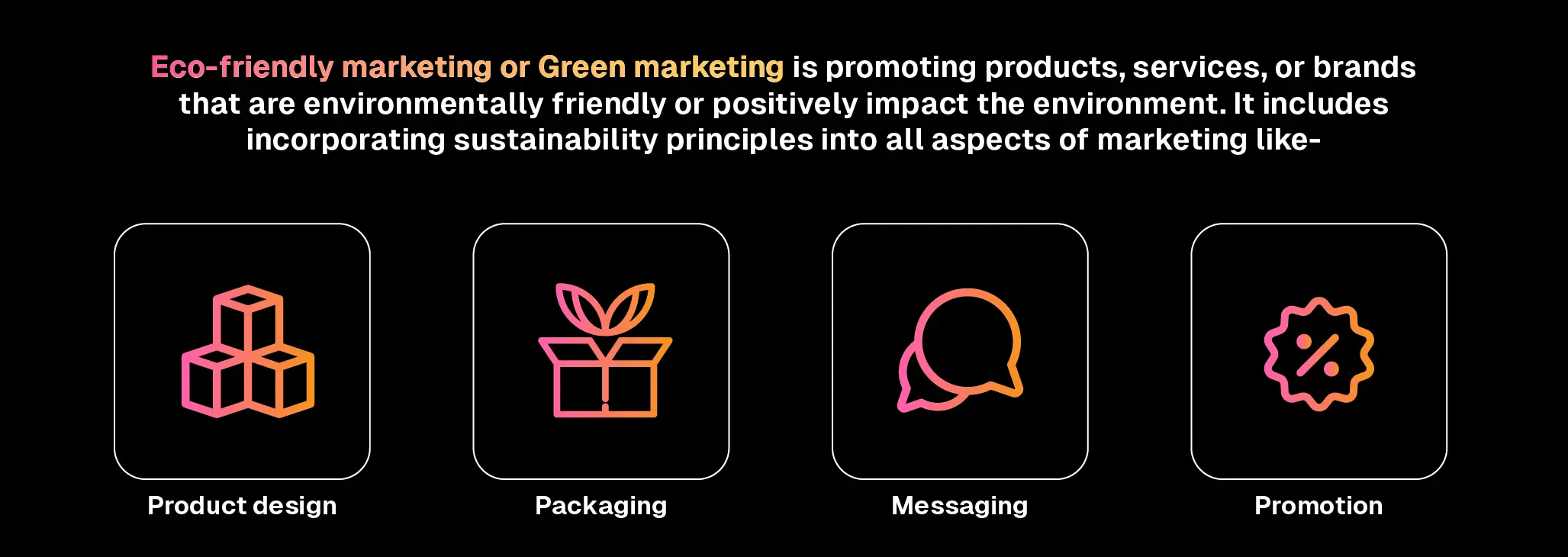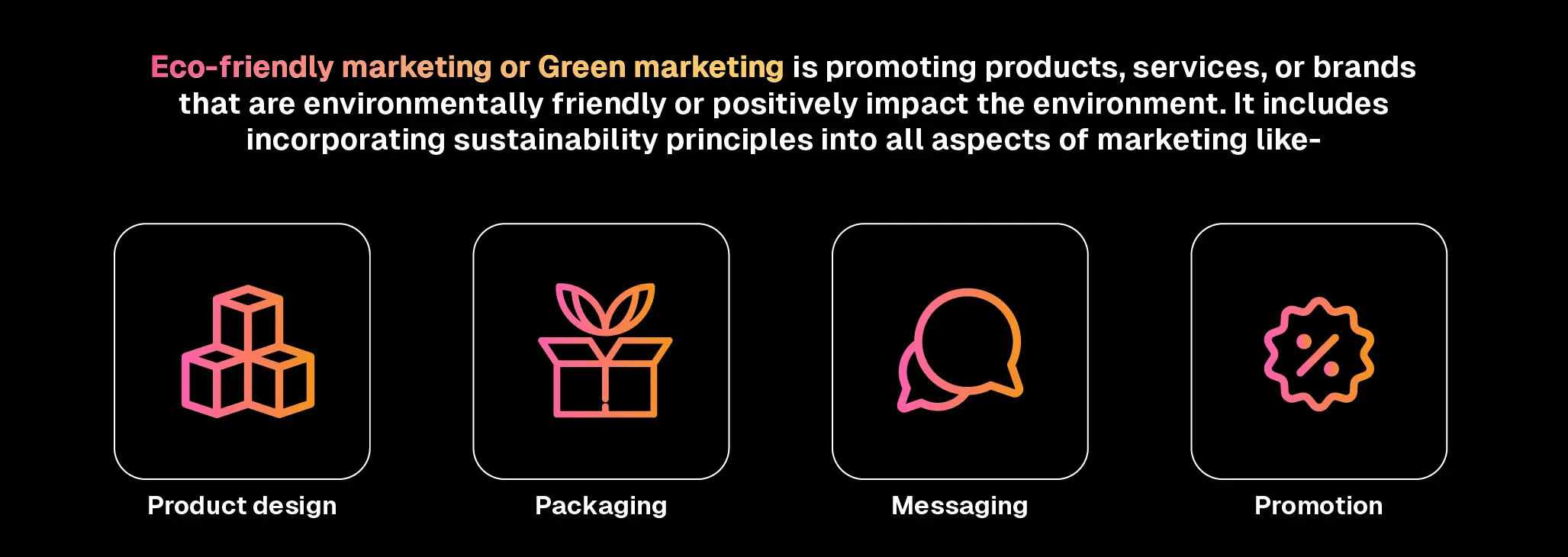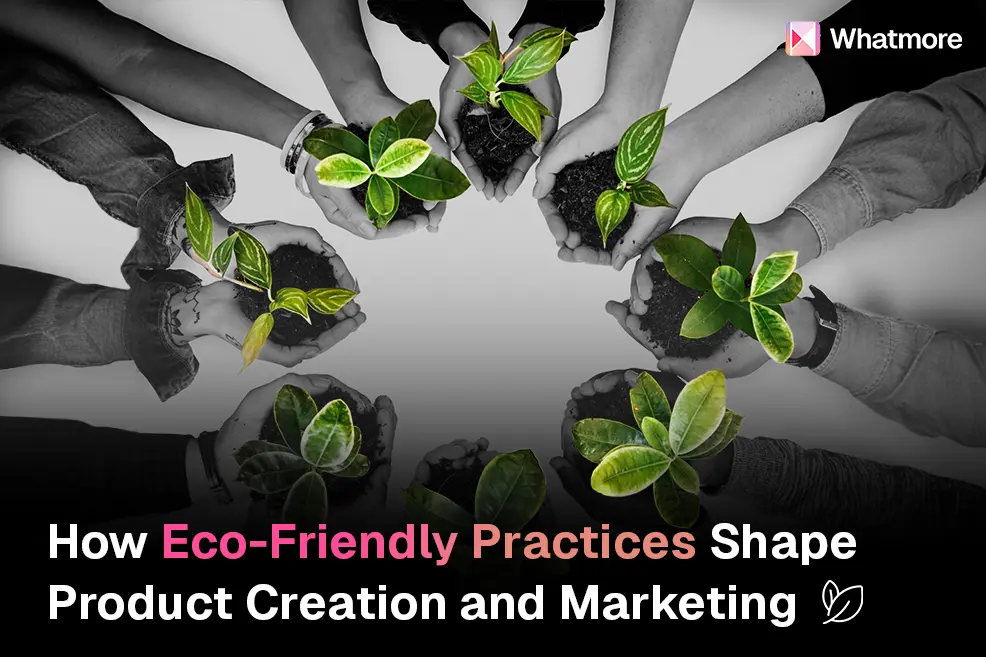We care more about the environment now than we did 10 years back. Think about it. Conversations around climate crisis, sustainability, and how to be eco-friendly are becoming more common every year. It’s not hard to understand why. The polar ice caps are melting, global warming is making many places inhospitable, fossil fuel is running out, and we’re generating way more waste than we can dispose of. 10 years ago, consumers didn’t care about sustainability and eco-friendliness. But they do now. And this is reflected in their purchase behaviour. In a survey, 55% of American consumers said they are willing to spend more on sustainable and eco-friendly products. With consumers putting their money where their mouth is, brands must adopt eco-friendly practices.
What is eco-friendly marketing?
Eco-friendly marketing (also known as Green marketing) means promoting products, services, or brands that are environmentally friendly or positively impact the environment. It’s not just a buzzword- it’s an effort by companies to reduce their carbon footprint. It includes incorporating sustainability principles into all aspects of marketing and product creation, like-
- Product design
- Packaging
- Messaging, and
- Promotion

This means that from creating a product to selling it and finally disposing of it, companies do everything possible to minimize the harm to our environment. For example, some e-commerce companies use sustainable materials to create their products and ensure that their products can be recycled or composted at the end of their lives. Similarly, many fashion brands sell clothes made with upcycled or discarded fabrics to reduce environmental harm.
Companies that use eco-friendly marketing practices are transparent about their raw materials and manufacturing processes and try to educate consumers to make informed decisions about how they spend their money. After all, consumers vote with their money and have the power to make other companies more eco-friendly.
Do consumers care about eco-friendly marketing?
It turns out that they do. More and more consumers are waking up to environmental issues like climate change and pollution. They want to make choices that will help, not harm, the environment. This is especially true for the younger generations—the Millenials and Gen Z. They’re passionate about sustainability and prefer to spend their money on brands that share their values.
According to the 2024 Deloitte Global Survey,
- 64% of Gen Zs and 63% of Millenials are willing to pay more for environmentally sustainable products
- 25% of GenZs and 24% of Millenials have stopped or lessened their relationship with a company due to its unsustainable practices
This is despite the steadily increasing cost of living. Long story short, green marketing is not a fad. Consumers are aware and care about the impact that their favourite brands have on the environment. They’re also pretty savvy and know when a company is genuinely eco-friendly versus when they’re just pretending. They want transparent information about what makes a product sustainable and what a company is doing to help the environment.
Big companies know this. This is why 200 companies, including Twitter, Salesforce, and Procter & Gamble. Microsoft, Starbucks, and Nike have vowed to reach carbon net-zero emissions by 2040.

Benefits of including eco-friendly practices in product creation and marketing
Including eco-friendly practices in product creation and marketing isn’t just good for the environment. It’s also good for winning the trust of consumers. Here’s how it can help-
- Stand out in the competitive market
As more and more brands come up, being eco-friendly can differentiate you from the rest. It will also make you more appealing to the consumers
- Reduce Environmental Impact
At the end of the day, we all share this one planet. Being eco-friendly will reduce waste and cut down on your carbon footprint.
- Tax Benefits
Many governments offer tax incentives and credits for businesses that have eco-friendly practices. This will help you reduce your overall business expenses and increase profits.
- Boost Credibility and Brand Value
Having a strong commitment to sustainability and communicating it across all marketing channels will improve your brand’s reputation.
- Reach New Audience
Every year, more consumers become concerned about the environment. Having eco-friendly marketing practices will attract these new customer segments.
- Long-Term Growth
As consumer demand for sustainable brands rises, being green is the only way to ensure long-term growth.
Eco-friendly marketing is here to stay. Being a sustainable company isn’t just good for the environment—it’s a smart business strategy for improving brand reputation, profits, and long-term growth.
Do you want to create high-quality videos for your brand in under 60 seconds? We’re running a free trial for Whatmore Studio, an AI video creation tool. Check it out now!















